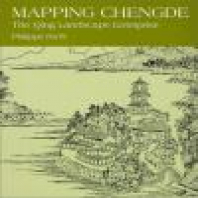The imperial residence of Chengde was built by two powerful and ambitious Manchu emperors between 1703 and 1780 in the mountains of Jehol. The site, which is on UNESCOs World Heritage List, combines the largest classical gardens in China with a unique series of grand monasteries in the Sino-Tibetan style. Mapping Chengde, the first scholarly publication in English on the Manchu summer capital, reveals how this unlikely architectural and landscape enterprise came to help forge a dynastys multicultural identity and concretize its claims of political legitimacy. Using both visual and textual materials, the author explores the hidden dimensions of landscape, showing how geographical imagination shaped the aesthetics of Qing court culture while proposing a new interpretation of the mental universe that conceived one of the worlds most remarkable examples of imperial architecture.
Mapping Chengde: The Qing Landscape Enterprise
Trang chủ ›
Tài liệu ›
Công nghệ thông tin ›
Hệ điều hành ›
Mapping Chengde: The Qing Landscape Enterprise
| Người gửi: | Phí Đình Thảo |
| Ngày đăng: | 29/05/2021 |
| Đánh giá: | |
| Votes: | 0 |
| Nhận xét: | 0 |
| Lượt xem: | 604 |
| Download: | 0 |
| Loại tài liệu: | Free |
Mô tả:
The imperial residence of Chengde was built by two powerful and ambitious Manchu emperors between 1703 and 1780 in the mountains of Jehol. The site, which is on UNESCOs World Heritage List, combines the largest classical gardens in China with a unique series of grand monasteries in the Sino-Tibetan style. Mapping Chengde, the first scholarly publication in English on the Manchu summer capital, reveals how this unlikely architectural and landscape enterprise came to help forge a dynastys multicultural identity and concretize its claims of political legitimacy. Using both visual and textual materials, the author explores the hidden dimensions of landscape, showing how geographical imagination shaped the aesthetics of Qing court culture while proposing a new interpretation of the mental universe that conceived one of the worlds most remarkable examples of imperial architecture.
Mua lượt tải
Tiết kiệm chi phí
Số ngày hết hạn tính theo gói cao nhất còn giá trị
Với nhiều ưu đãi hấp dẫn





































